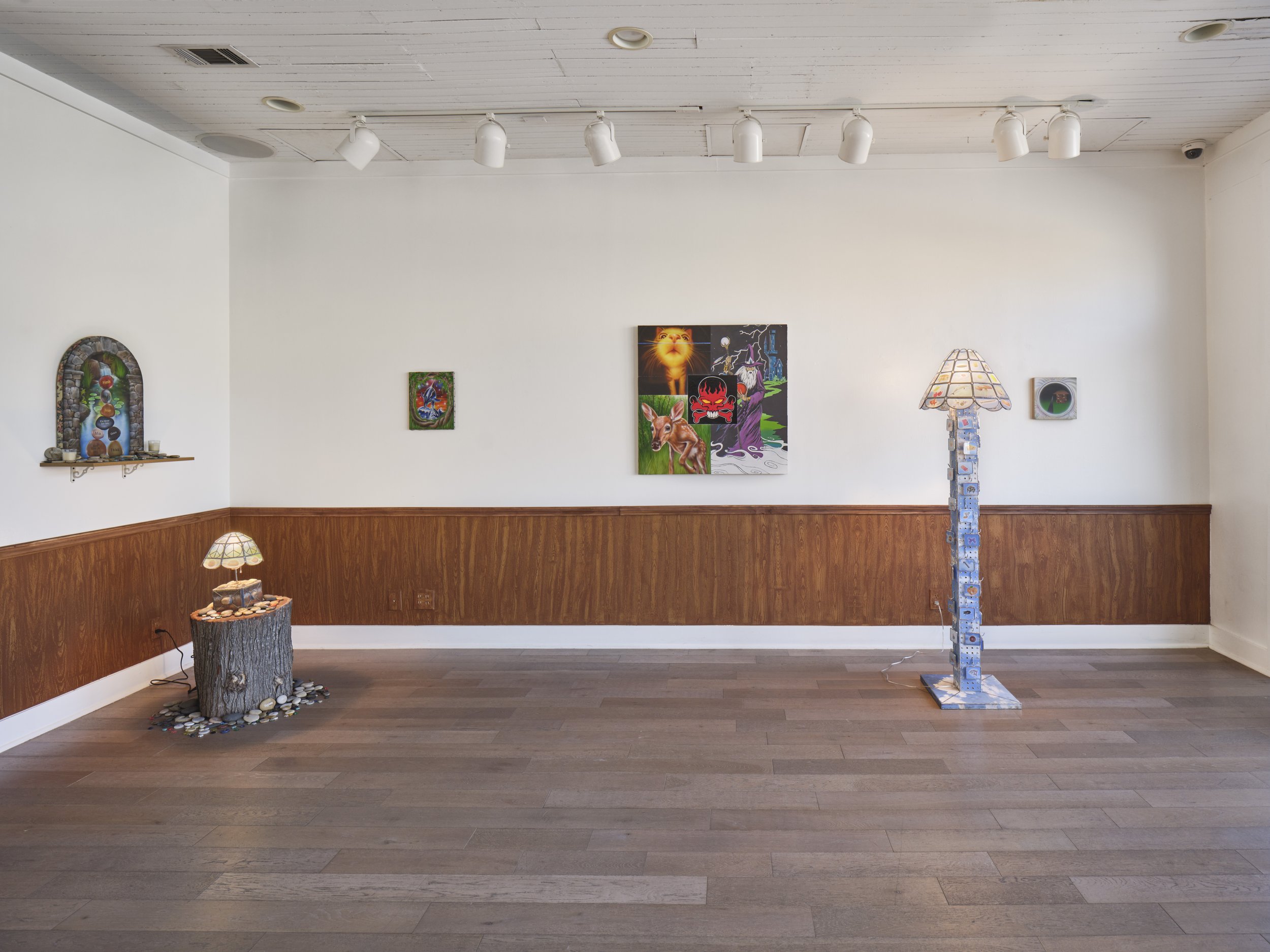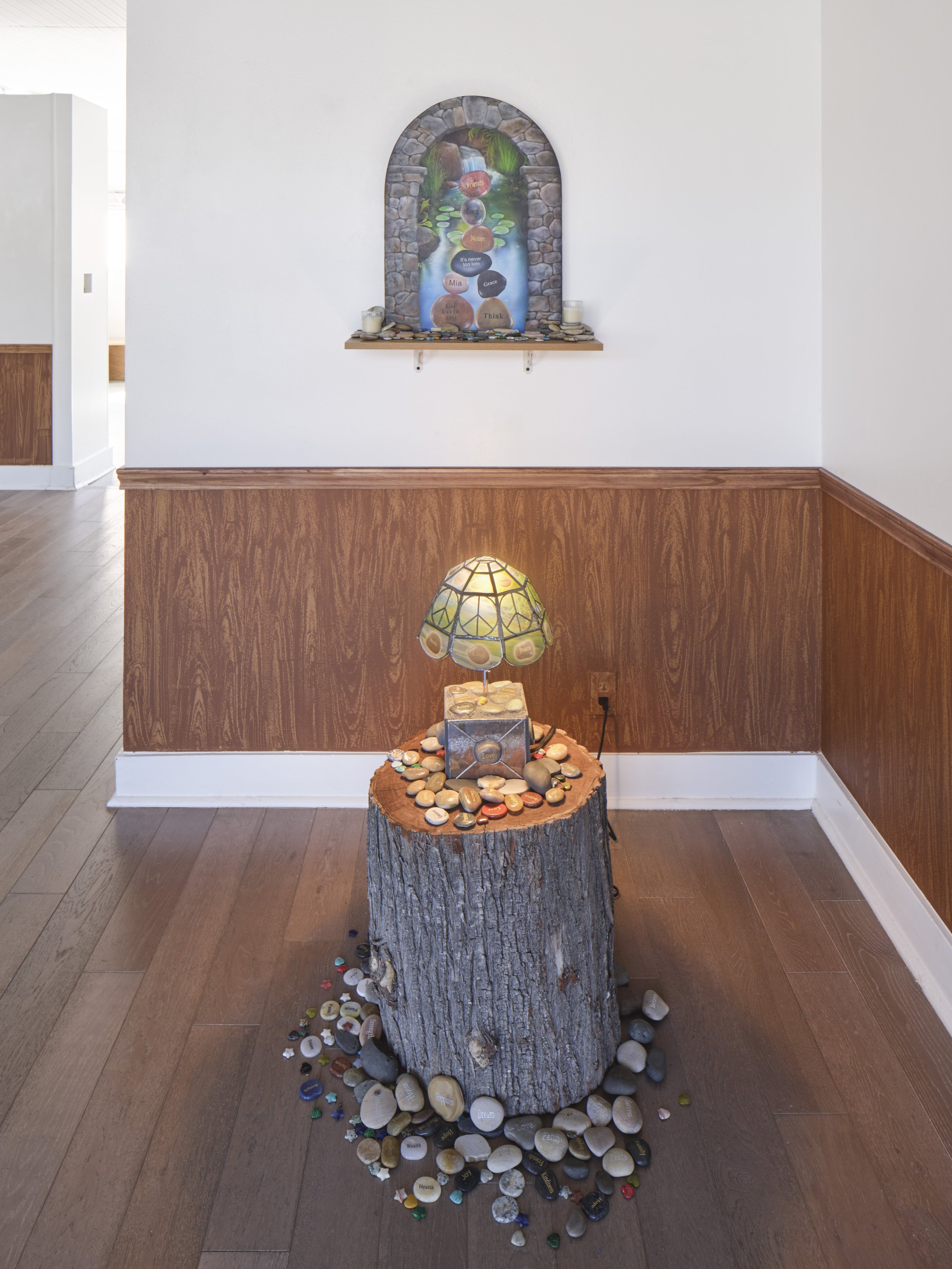Grace Horan and Mia Scarpa’s
Cool Day
January 13-February 10, 2024
In the early aughts, pioneering net artists gathered online in “surf clubs,” group blogs created collaboratively with images trawled from surfing the web. It exposed an archival impulse that, while tinted by the unprecedented access the internet gives us to material, has existed since time immemorial. Alongside the hunter-gatherer was the archivist, collecting and mentally cataloging finds that revealed themselves amidst the search for survival.
It's this impulse that Mia Scarpa (b. 1997) and Grace Horan (b. 1999) seem to follow. Their images and objects evoke an ethos of collecting that animates everything from official archives to family photo albums to online image boards. The result of such an experience is a schizophrenic reading of images that hardly make sense together—except in the fact that they do. Works such as Purple Magic - The Wizards (2009) (2023) and Baguettes In The Face (2023) embody this reading, combining disparate images into one object, forcing the mind to accept them as coeval and look for meaning in their togetherness. But what if the only meaning in their combination is simply that they are, indeed, together?
The images of surf clubs’ combination—and the amalgamated images and objects present in “Cool Day”—reveal the heart of collaboration—that we collaborate because we can, not because we have to, that sometimes it’s more about being together than any greater meaning or goal. Interchange “friendship” here for “collaboration” and it still works. And don’t friends make the greatest collaborators? (Until, sometimes, they don’t.) But Scarpa and Horan remind me of the greatest virtue of collaboration: that, at its best, it can feel like a sleepover, a never-ending secret with your best friend, where only you two know the truth. It’s what made early net art so fun; it’s also what most post-internet artists failed to capture. But now that we’re in the post-post-internet—wherein the internet has infused everything so much that there is no after it in the temporally chronological sense, only after in the “inspired by” sense, in the “after the advent of” sense—artists like Scarpa and Horan are bringing back this ethos of fun.



This ethos evokes the process of acquiring and recontextualizing objects through the collector’s impulse, which emerges in Horan’s work through the repurposing of found materials, an example of the art historical readymade. Upon first blush, these lamps appear as artifacts from the estate sale of an eclectic woman, visited with friends early on a Saturday morning before a particularly memorable brunch. But upon further inspection, a memory emerges: ISpy combines icons of our present age—a PC, the hole emoji, cats, seapunk elements, all on a cloudy vaporwave-esque background—in a configuration that reminds one of the I SPY series, published by Scholastic Press (yes, of the ubiquitous Scholastic book fair) in the late nineties and early aughts. Pore over this object to find the butterfly, the roach, and the stack of pancakes.
If ISpy takes us inward, into childhood memories, Me + You takes us outward, into nature—but not nature untouched, featuring images of hearts carved into trees, the desire to make a love—which might, in the end, be short-term—last beyond our lifetimes. The carving of names makes clear the cultural belief that love is more natural than natural, that it is where the manmade touches the godly created, and that it is our most lasting of experiences. It is this love that lights our way, made literal in the incorporation of these images into a functional lamp.
The readymade is also literally present in Rock Of Love (Peace Rock) (2023), which incorporates the kitschy printed-on stones one can buy at gift shops galore, with words that stand as short-hand for longer platitudes: “Accept,” “Focus,” “Hope,” “Imagine.” They are the words that litter self-help books and New Year’s resolutions alike—if we could follow these rocks, we imagine, our lives would be a hell of a lot better. Providing the backdrop for these rocks is a painted stone arch surrounding a stream peppered by natural boulders, leading us on the life cycle of a commodity—from naturally occurring to useable to kitsch. But here, it’s not kitsch or art—it’s kitsch as art, an equivalence made possible by the presence of love: love for an object, love for another, love for each other.
Scarpa and Horan have also inserted their names onto these rocks, leading us to believe the most important word is the one they have placed at the top of their painted rock tower: “Friends.”
Text by Grace Sparapani



















